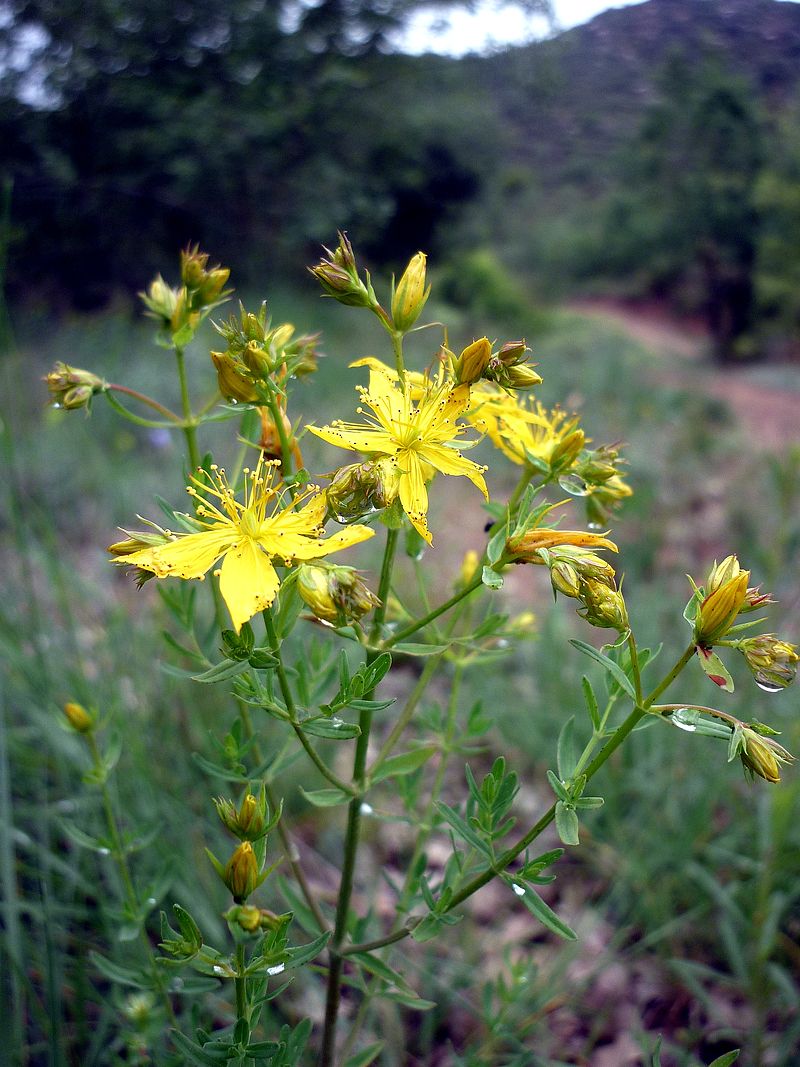
I love the cheery yellow flowers of St. John’s Wort
I have a bad habit of growing herbs solely for their flowers. St. John’s Wort (Hypericum perforatum) is a good example of this. I love its cheery yellow flowers which appear in June around the time of the summer solstice and St. John’s Feast Day on June 24 for whom it is named.
As much as I value it for its ornamental value, St. Johns Wort has been an important medicinal herb for thousands of years. In the past, it has been used for treating wounds, bladder issues, dysentery, diarrhea and worms.
In modern times, we know it as an anti-depressant. In Europe, especially Germany, it is used to treat depression in children and adolescents. Here in the US, it has not passed FDA approval, so it is considered a dietary supplement. If you are using St. John’s Wort, you should be very careful because it has negative interactions with a number of medications including birth control pills, HIV drugs, cancer medications and blood thinners. Always check with your doctor before taking any kind of dietary supplement.
St. John’s Wort is poisonous for livestock. Horses, cattle, goats and sheep who consume it in their pastures can spontaneously abort or even die. Other symptoms of poisoning include hyperactivity which the animals exhibit by running in circles until they are exhausted.

St. John’s Wort forms dense mats if not kept pruned and deadheaded.
St. John’s Wort is a perennial woody shrub that is native to Europe, North Africa and Western Asia. It has become naturalized throughout the temperate areas of the world thanks to European colonization. In many places, it has become invasive. It spreads by both seeds and underground runners. It forms dense mats of plants that chokes out native plants. One plant can produce up to 100,000 seeds each year. Those seeds remain viable for ten years.
The plants are hardy in zones 5 through 8. They prefer full sun and well-drained soil. In warmer zones, you should provide them with some shade in the afternoon. The shrubs grow to a height of 2 to 3 feet. It is not recommended that you use these plants as a border along a walkway because the leaves release an unpleasant odor if you brush by them or break them. In a garden bed, space your plants 24 to 36 inches apart.
The flowers are bright yellow and about 1 inch across. There are many of them on each branch. Bloom time is late spring to early summer. It’s a good idea to deadhead your plants before the berries form to prevent them from dropping thousands of seeds into your garden. If you have animals in the area, the seeds are covered in a sticky substance that adheres to the animals’ coats as they pass by thereby spreading the seeds far afield from the original plants.
Pruning should be done in the spring. Remove any dead or damaged branches then shape as desired. The plants can be propagated by division, softwood cuttings taken in the spring or by seed.
To grow St. John’s Wort from seed, sow your seeds indoors 6 to 8 weeks before your last frost or you can direct sow them in your garden after your last frost. Surface sow the seed. Do not cover. They need sunlight to germinate. Germination should occur in 10 to 20 days. If you have started your seeds indoors, you can transplant them outside after your last frost when they are 2 to 3 inches tall. You should space your seedlings 24 to 26 inches apart. If you have direct sown your seeds outdoors, thin the seedlings to 24 to 36 inches apart when they are about 2 to 3 inches tall.

